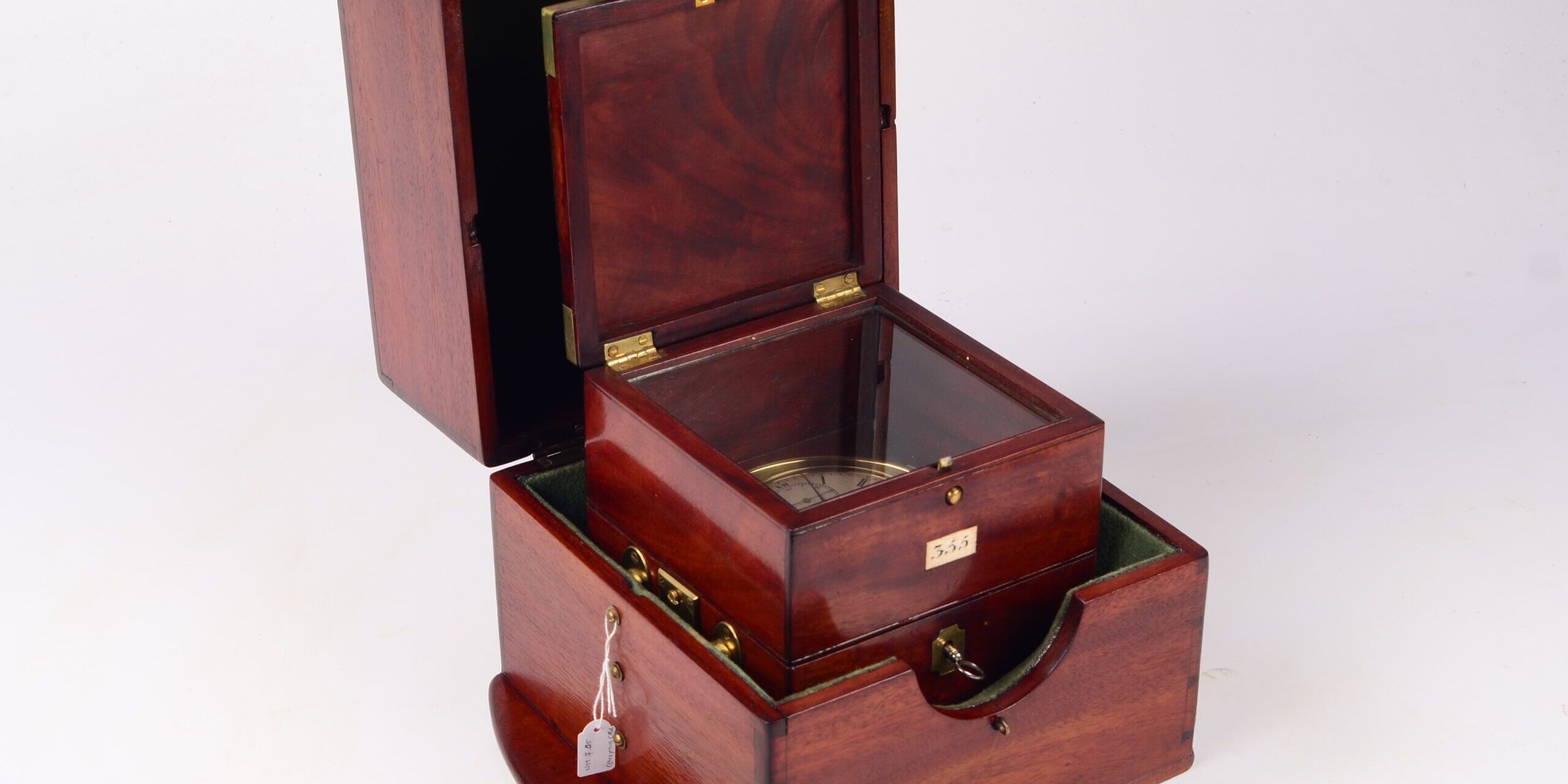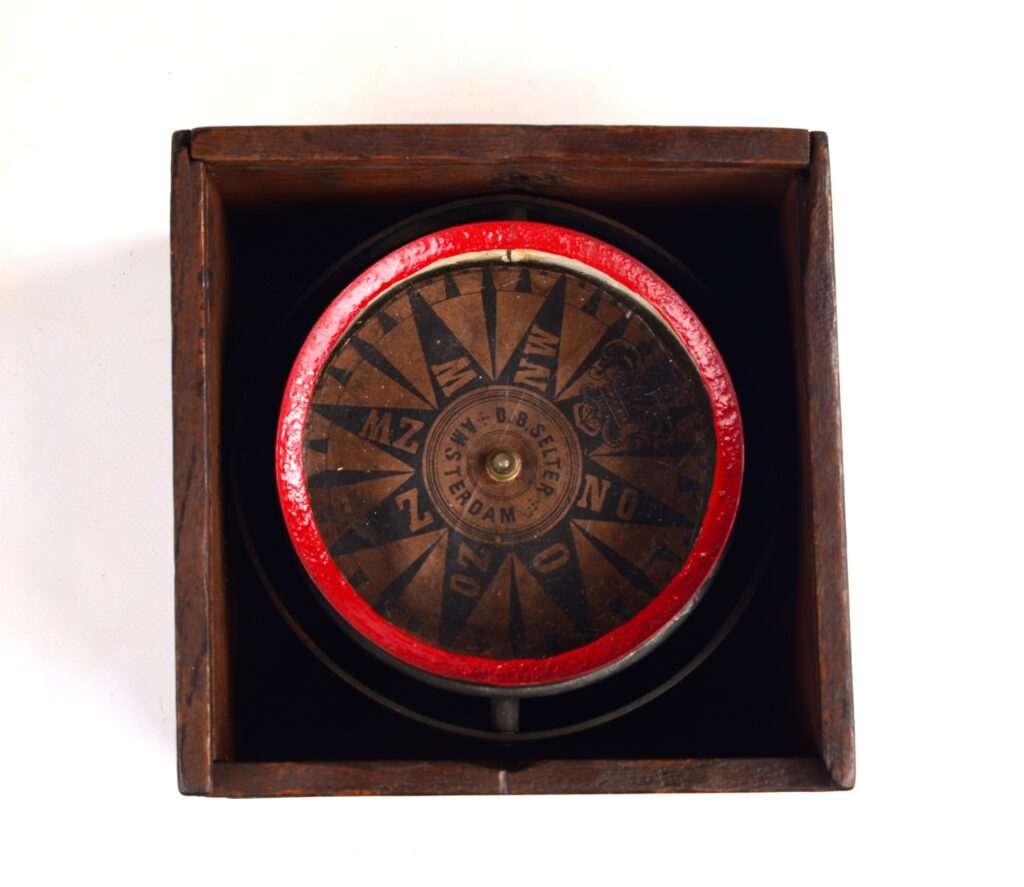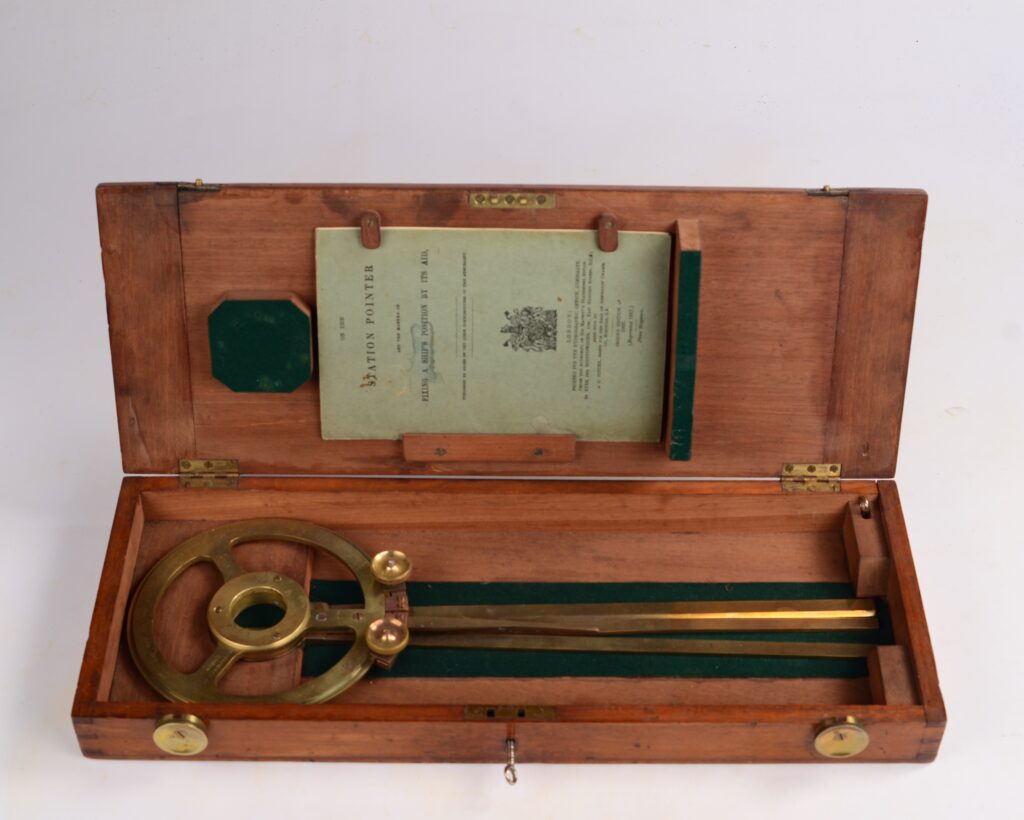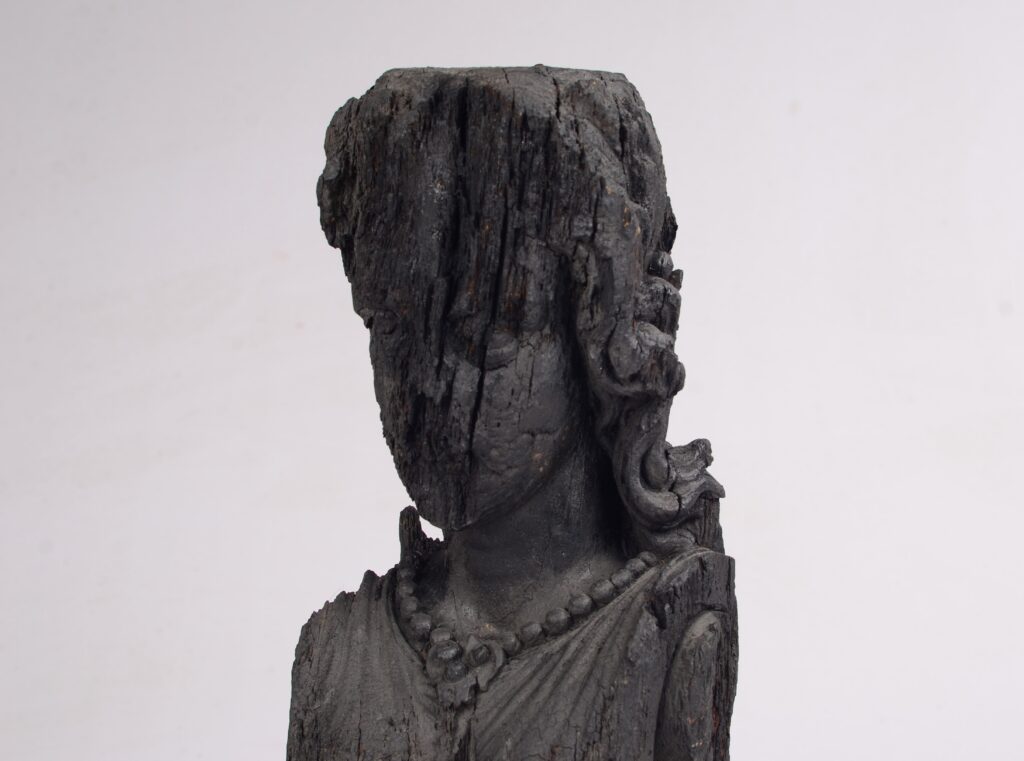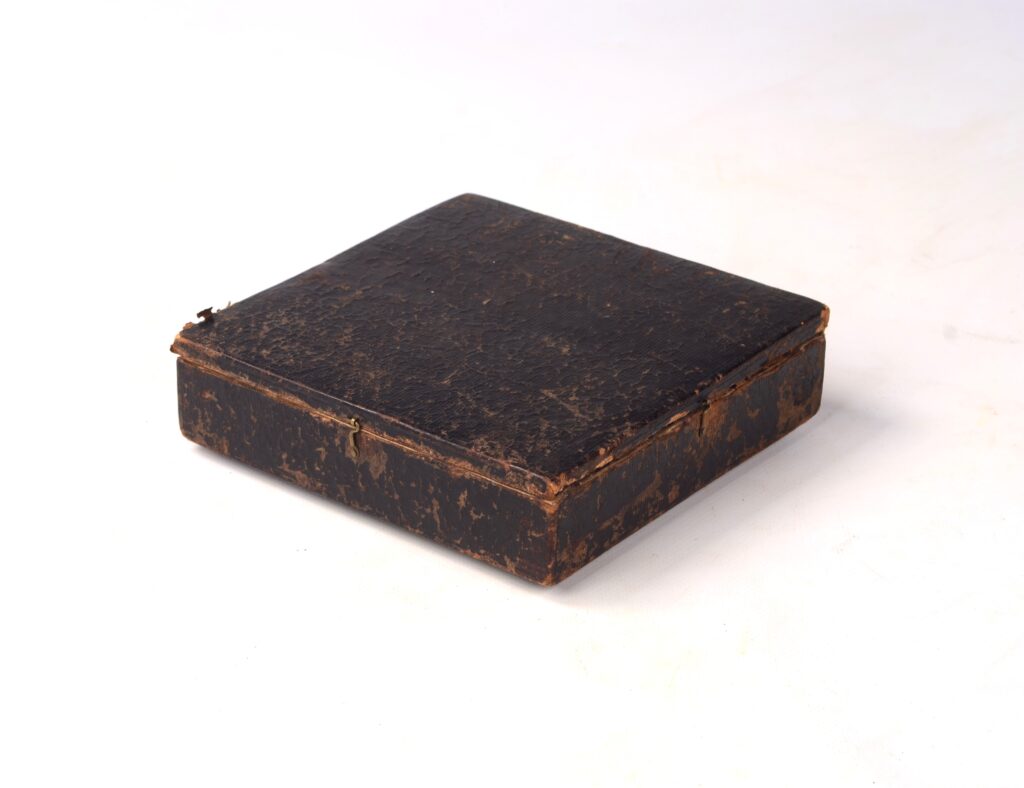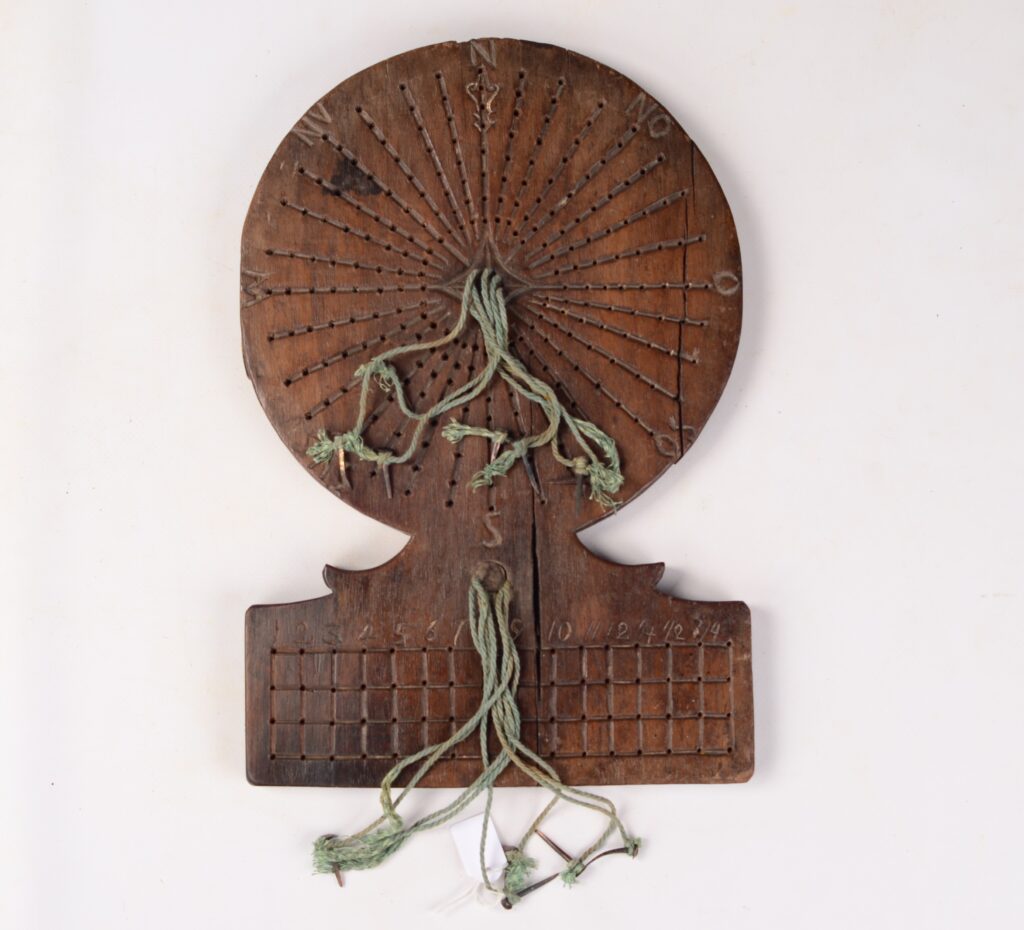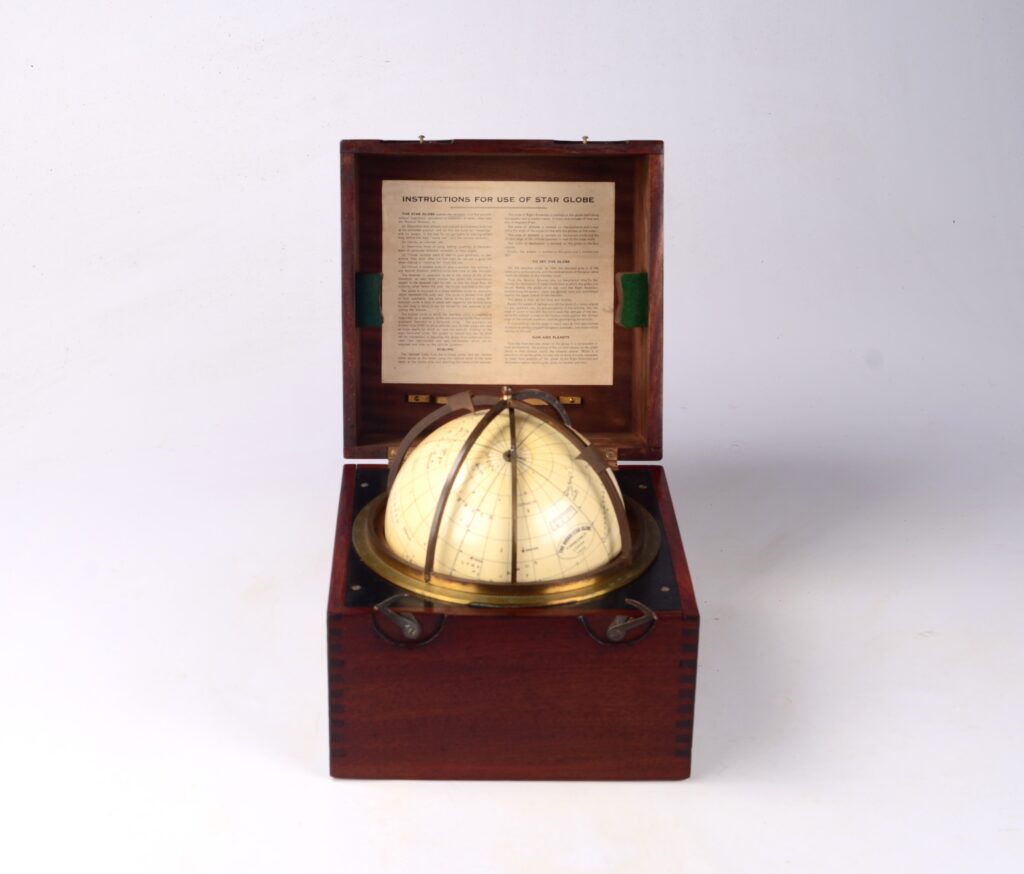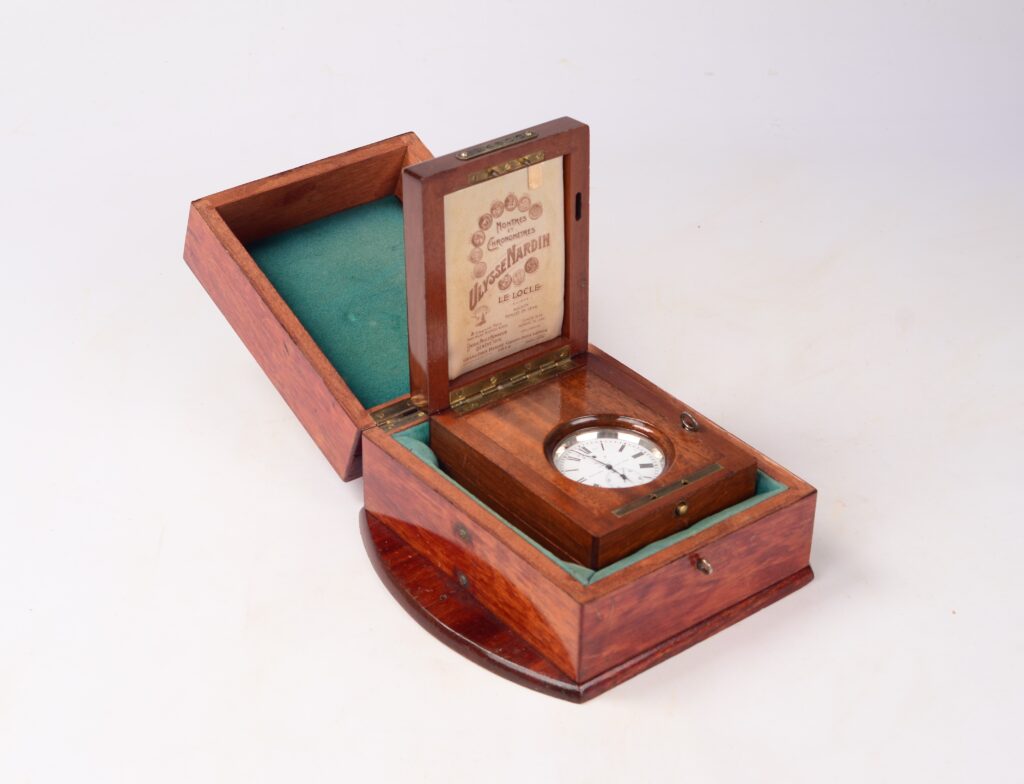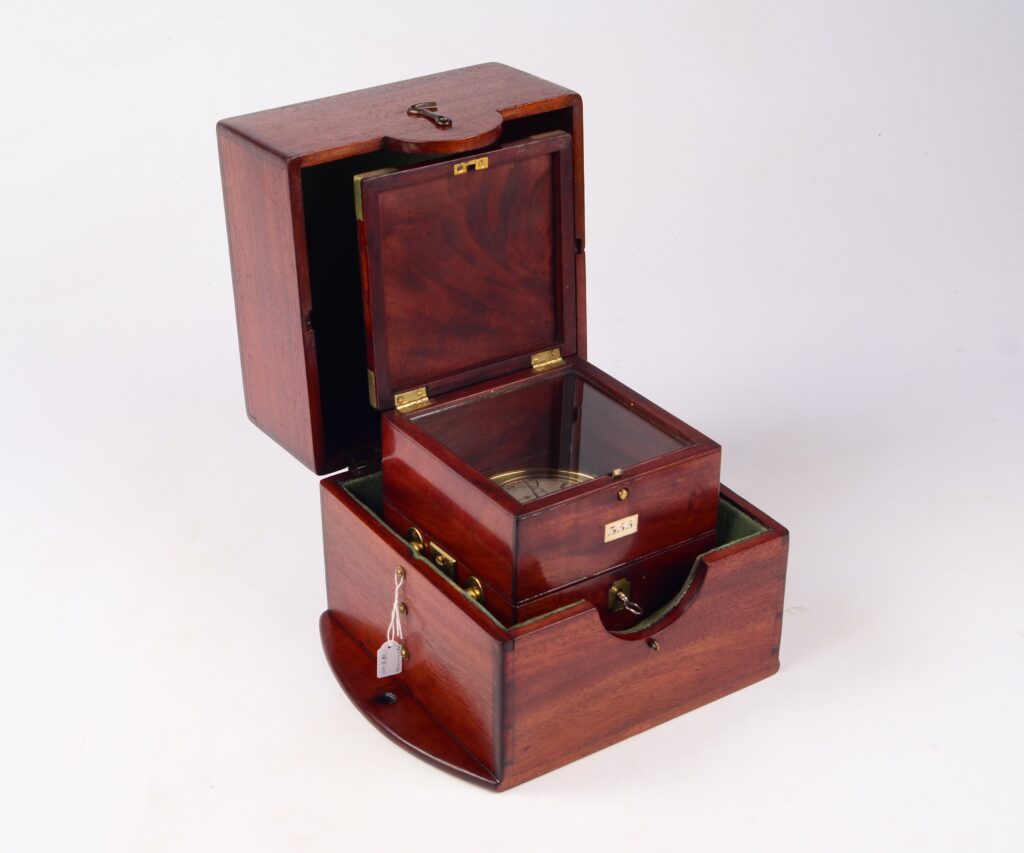Dry Card Compass – D.B. Selter, Amsterdam, 19th century
Dry card compass in a copper bowl. The compass is gimbaled mounted in a wooden case of oak. Sliding cover is missing. The inside of the bowl is painted white with lubber’s line. On the rose 32 points and the name of the maker. On the rose, north with fleur de lis. In the middle…
Read MoreEarly Station Pointer for Coastal Navigation – Hughes, London, ca. 1870
Early station pointer with manual in mahogany case for coastal navigation. Made by Hughes, London. The instrument is completely made of brass and does not yet have a silvered scale as with the later species. The scale is divided in half degrees and reads by two verniers to one minute of arc. The diameter of…
Read MoreStar Chart for Southern Observers – Austin, Australia, 1969
Review of the Astronomical Society of the Pacific: Star Chart for Southern Observers, prepared by R. H. Austin (New York: John Wiley & Sons, Inc., 1969). Three charts on a single wall-size sheet give the apparent positions of approximately five hundred of the brightest stars. These charts divide the celestial sphere into three sections (Northern,…
Read MoreFigurehead – 18th century
Figurehead of an unknown ship. Not for the prow, but placed somewhere on the ship as a ship’s decoration. It is a particularly decorative and richly decorated female statue with long locks and a medallion around her neck that unfortunately went up in flames along with her ship. What remains is an image with history…
Read MoreSurveyor’s quadrant and glass plate tool – Sweden, ca. 1850
1. Brass quadrant in cardboard box. The instrument is used for angle measurement in the horizontal plane as well as for height measurement. For the latter, a plumb line has been added that can be placed in the appropriate slit. The lid of the box is hinged on one side and can be secured on…
Read MoreTraverse Board – Skandinavian, ca. 1800
The traverse board was used to make dead reckoning. The circular part has 32 compass points with eight holes on each point. In the middle are eight cords secured with little pins. The pins are made of copper. The cardinal regions are marked N, NO, O, SO, S, SV, W, NV. The incorrectly indicated SV…
Read MoreCelestial Globe, Star Finder – H.Hughes & Son, London, ca. 1920
Making position by observation of stars is done at twilight. With partly cloudy skies it can be difficult to find the right stars. This star globe helps with it. In the lid of the box there is a paper label with instructions for use. With Bernard’s Nautical Star Chart. This globe is in the original…
Read MoreElectric Master Deck Watch with carrying box – Ulysse Nardin, 1943, Geneva, Switzerland
At sea, having the right time on board is essential to be able to make a position. Very rare and large deck watch in a case of stainless steel made by Ulysse Nardin. Special about this specimen is the electrical mechanism by which the watch can be used as a master timekeeper or mother clock.…
Read MoreVery rare and early 8-day Chronometer in Carrying Case – Parkinson & Frodsham, ca. 1820
Marine chronometer of Parkinson & Frodsham with rare display in original mahogany box with key and brass mountings. Bone plate 355 numbered. Gimbal suspension, brass case, spring detent chronometer with helical hairspring. Signed and numbered 355. Original dial with rare rotating power reserve indicator for 8 days of power. Blued steel hands, large seconds indicator.…
Read More